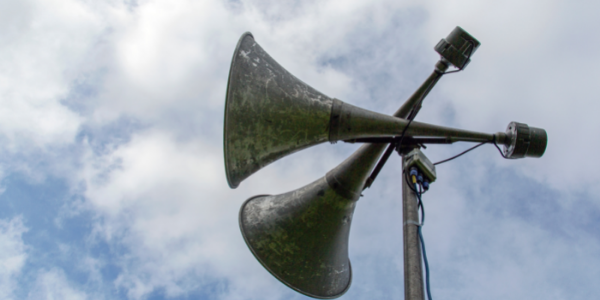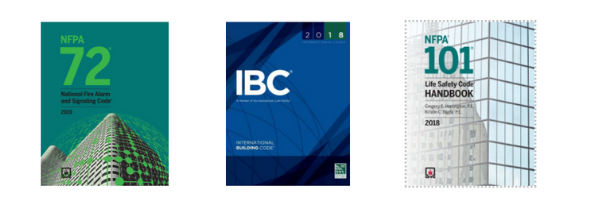Mass Notification in Today’s World

By: Jon Polly | Jun 04, 2021
April 20th, 1999, two young men walked into Columbine High School and forever changed the world. Then came April 16th, 2007 (Virginia Tech), December 14th, 2012 (Sandy Hook), and April 30th, 2019 (UNC-Charlotte); and sadly, there are many more days in recent years. School shootings are just one of the many scenarios that society has experienced as of late where mass notification to building occupants or to the public is required. Mass notification systems now include fire alarms, emergency notifications, and mass communication.
History
Mankind has used Mass Notification Systems (MNS) since the city of Constantinople in ancient Turkey, circa 1204 A.D., where signal fires were burned as beacons to transmit messages. In modern days, schools and other locations where large groups would gather had only analog intercom systems. A 70VDC shielded two wire connection interacted with in-building speakers and paging devices. While the intercom was traditionally an Audio Visual (A/V) solution, MNS has expanded to now include traditional security integrators and IT software companies as service providers.
MNS Requirements
The requirement is that a MNS must be heard over ambient sound levels and cannot have conflicting signals. Since ambient sound levels may change, this can create issues for a MNS. There is a code requirement in the International Building Code (IBC) section 917.1 that relates to colleges and universities where building occupancy may be more than 1,000 occupants. NFPA 72®, National Fire Alarm and Signaling Code® and NFPA 101®, Life Safety Code® take it a bit further to state the MNS shall be designed by a certified designer before connecting to a fire alarm panel. Any device connecting to a fire alarm panel must be UL 2572 (Standard for Mass Notification Systems) listed. While most MNS applications do involve fire alarm, this is a subset of the MNS specific to the fire alarm industry. A MNS may also involve other applications that do not involve a building fire alarm. For those applications, it is a specific customer requirement.

The MNS Ecosystem
While the traditional MNS is in a building, requirements have forced technologies to offer in-building solutions, Wide Area Network (WAN) solutions, or a hybrid mixture. Today, these systems can be direct-wired or internet protocol (IP) based solutions. For the IP based solutions, many of them have incorporated Digital Audio Network Through Ethernet (DANTE) as a communications protocol. DANTE is similar to the Open Network Video Interface Forum (ONVIF) standard for IP surveillance cameras. Additionally, most systems can communicate through Session Initiation Protocol (SIP) with Voice over IP (VoIP) systems. The change that the industry is seeing is traditional security manufacturers offering DANTE and SIP enabled speakers and controllers, software companies offering MNS in new and different ways that appeal to the customer, and traditional audio and “voice” manufacturers now offering upgraded solutions. MNS through SMS text messaging or specific apps have proliferated the Bring Your Own Device (BYOD) to many companies. MNS can be integrated with traditional access control or Video Management Systems (VMS) to provide instant communication when a lockdown has been initiated, or to initiate the lockdown as part of the notification. Additionally, MNS now includes integration with Power over Ethernet (PoE) illuminators to work in sync to get people out of buildings safely when one or more exits are cut off, similar to emergency lighting in airplanes.
The convergence of Information Technology (IT) Systems and Operational Technology (OT) Systems has created a push in the industry to make MNS be purchased as a Software as a Service (SaaS) model. Many customers prefer this method as MNS can become readily available and is tracked per user. This is offering both the A/V provider and the security integrator additional ways to sell recurring monthly revenue services.
Mass notification systems are used in-building, or in a WAN where there are multiple buildings, or even for citywide notification. Systems can be “zoned” by building or through geo-mapping when notifying multiple city blocks. MNS work best when used for emergency communication where intended recipients are not familiar with the notification, or if the system incorporates a unique sound that is different from ambient noise or conversations. Too many notifications can desensitize recipients.
Implementing MNS
MNS is a very large topic with many applications. At its core, the following must occur:
- Everyone in the selected area must receive the message. If this is a city, a campus, or a single building on a campus, the message must be heard by everyone. This can include email, voice, SMS, or another method.
- The message must be heard immediately. Delayed notifications could be the difference between life and death.
- The message must have clarity. It must be verbally clear with no mumbling or squeaking. The message may be pre-recorded.
- The message must be short. It should be simple and to the point.
Additional features that businesses are now looking for is interaction with social media platforms, or interactive desktop applications so that individuals can request assistance or m

ark themselves as safe. Other applications can include ways to maintain business continuity in the midst of a crisis. For more detailed information on regular employees and visitors, the MNS should be integrated with the access control system, the camera system, and the visitor management system. The unification of these systems can offer control centers and crisis management team members’ real-time management for where emergency resources are needed. This can be for a single building, a campus, or for citywide emergency management applications.
Closing
Mass Notification Systems have been around for many years. As the world continues to spin in turmoil, mass notification is becoming a necessity not only for schools, but for businesses, houses of worship, and cities. This necessity is driving security manufacturers and differentiators to develop new MNS technology. The necessity is opening the market. Now, software and IT providers, rather than A/V or fire alarm installers, are offering MNS when fire alarm is not part of the equation. Customers are now looking for SaaS models with a per user cost. MNS must be defined with all stakeholder involvement. Based on that stakeholder involvement, from unified platform to crisis management, the MNS can be intricately integrated or operate a singular system. The outcome, regardless of the industry, is that customers are ready to deploy mass notification systems.

